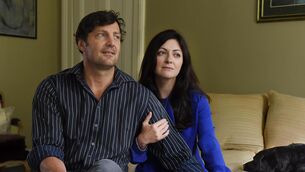John G O'Dwyer: We must do more to support our upland visitor attractions

The snow-covered MacGillycuddy Reeks make a striking backdrop for Ballymalis Castle, Beaufort, Co Kerry. Along with Ben Sléibhe in Co Galway, the area is involved in a recently-launched pilot insurance scheme to cover landowners in the event of an accident. File Picture: Denis Scannell
Compared with many other countries, we are lucky that Ireland has a small population with large and varied expanses of pristine upland and wilderness areas. For decades, however, we made little enough use of this, conceding the lion’s share of outdoor tourism to places such as Tuscany, Scotland, the English Lake District, and Spain.
Now Ireland’s richly varied upland and wilderness areas have come into their own, proving a virtual lifesaver for many during the pandemic.













